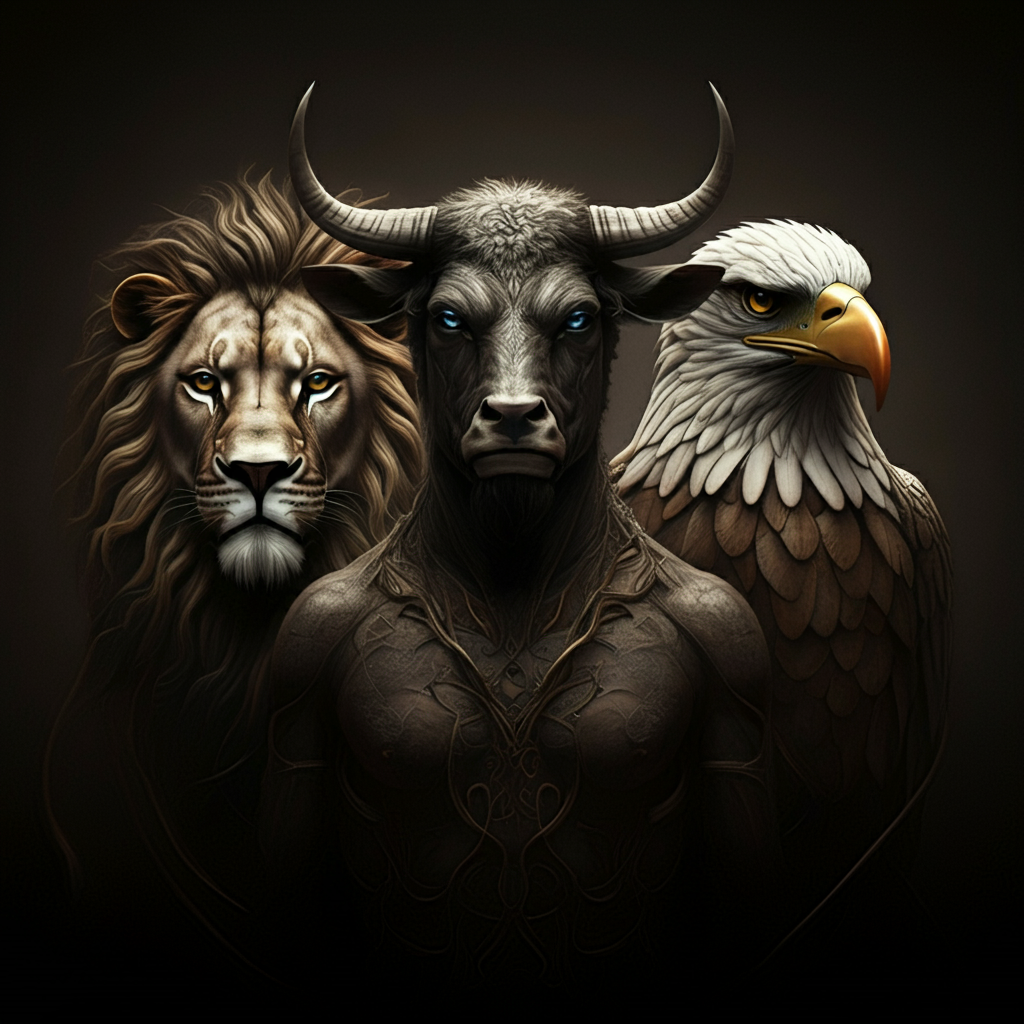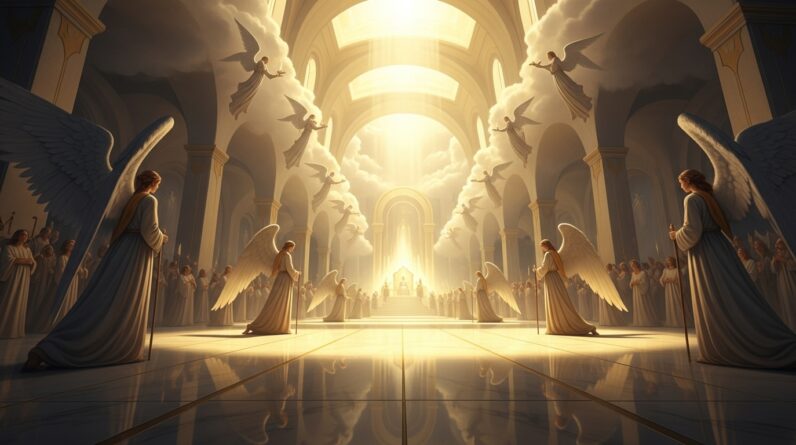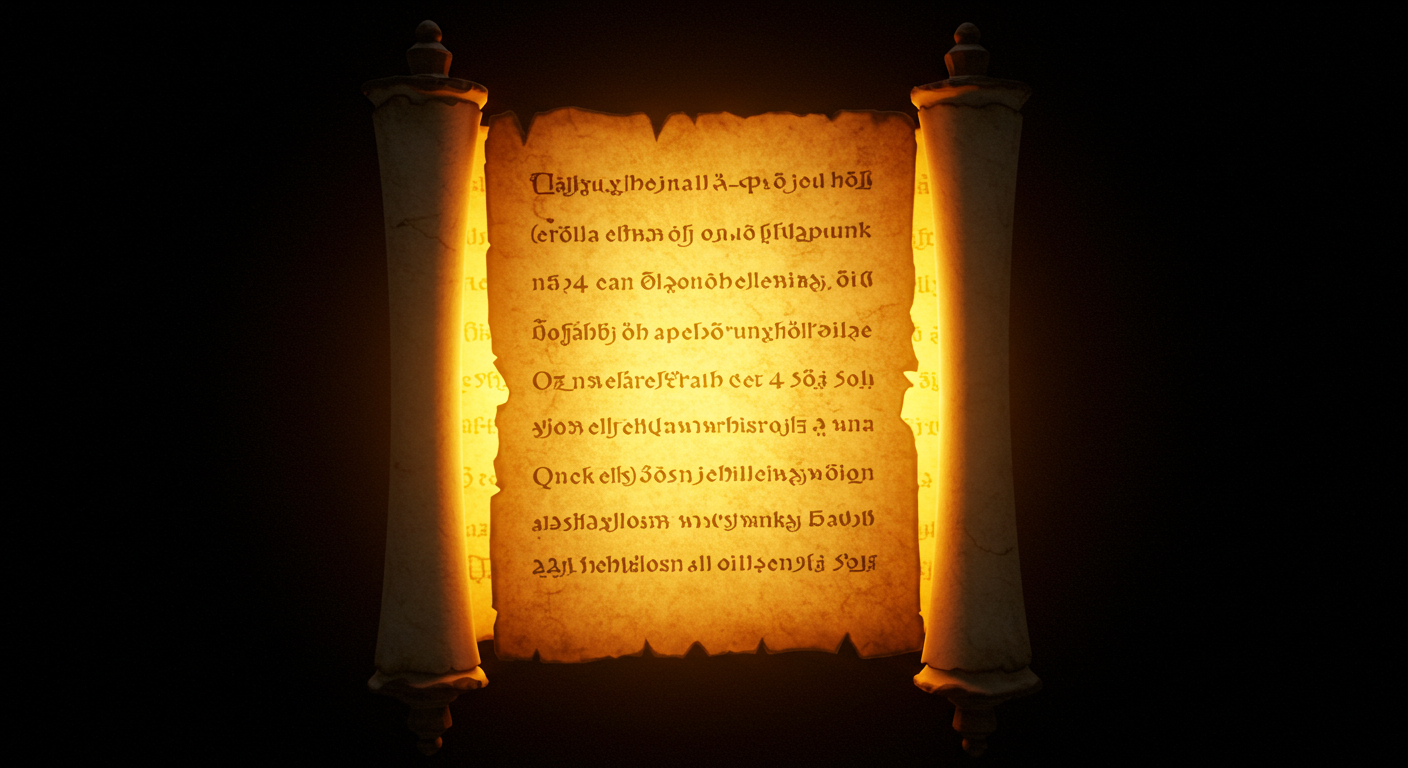The Mysterious Four Faces: Unlocking The Symbolism In Ezekiel 1:10
Biblical visions have always held a captivating allure. They reveal divine messages in a way that transcends the ordinary, and they often come clothed in the language of symbolism and mystery. One of the most enigmatic of these visions is found in Ezekiel 1:10. This passage describes the faces of four living creatures: a man, a lion, an ox, and an eagle. Understanding the significance of these faces can unlock deeper truths about the divine messages conveyed through the Prophet Ezekiel.
Introduction to Prophetic Visions
Definition of Prophetic Visions
Prophetic visions are divinely inspired revelations given to prophets in the Bible. These visions were God’s way of communicating with His people, revealing truths, warnings, and promises. Unlike ordinary dreams, prophetic visions often convey profound spiritual messages through vivid and symbolic imagery. Their purpose is to bridge the gap between the divine and the human understanding, providing insight into God’s plans and purposes.
Purpose of Prophetic Visions
Prophetic visions serve a crucial role in biblical narratives. They were often delivered during times of crisis or significant change, offering guidance, reassurance, or a call to repentance. Through these visions, prophets like Ezekiel could deliver messages that resonated deeply with their audience, not just on an intellectual level, but on an emotional and spiritual one. These divine communications were tailored to reach the hearts and minds of those who heard them, calling them back to faithfulness and obedience.
Historical and Cultural Context
Understanding the historical and cultural backdrop of these visions is essential. Ezekiel’s visions, for example, were given during the Babylonian exile, a period of immense distress and upheaval for the Israelites. The cultural practices and beliefs of that time deeply influenced how these visions were received and interpreted. By examining the historical and cultural context, we can gain a fuller appreciation of the visions’ significance and impact.
Context of Each Prophetic Vision
Scriptural Background
Ezekiel 1:10 is set within the broader narrative of Ezekiel’s prophetic ministry. The book begins with a remarkable vision by the Kebar River, where Ezekiel sees a storm coming from the north, filled with flashing lightning and brilliant light. Within this storm are four living creatures, each with four faces and four wings. This vision sets the stage for the unique and powerful messages Ezekiel is tasked with delivering to his fellow exiles.
Prophet’s Role and Mission
Ezekiel, a priest by lineage, was called to be a prophet during one of the darkest periods in Israel’s history—the Babylonian captivity. His mission was challenging: to convey God’s message of judgment against a rebellious nation and yet also provide hope for eventual restoration. Ezekiel’s visions, with their vivid imagery and symbolism, were instrumental in his efforts to reach an audience that was often resistant and despondent.

Vision’s Imagery and Symbolism
The four faces in Ezekiel’s vision—a man, a lion, an ox, and an eagle—are rich in symbolic meaning. Each face represents different attributes that are significant within the broader biblical narrative.
- Face of a Man: This symbolizes intelligence, rationality, and the human experience. Man, created in God’s image, signifies dominion and stewardship.
- Face of a Lion: Often associated with royalty and power, the lion represents courage, strength, and sovereign authority.
- Face of an Ox: The ox is a symbol of servitude, labor, and sacrifice. It represents patience and the relentlessness required in agricultural societies.
- Face of an Eagle: The eagle, a majestic bird, symbolizes freedom, vision, and a divine perspective. Its ability to soar to great heights represents a transcendence over earthly matters.
Together, these faces encapsulate a perfect balance of qualities attributed to God and his attributes: wisdom, power, service, and divine oversight.
Theological Significance
Theologically, the vision contributes to themes of God’s sovereignty and his multifaceted nature. It reveals how God embodies the perfect combination of these attributes — He is omniscient, omnipotent, enduring, and exalted. The vision reassures the exiles that despite their current suffering, God remains in control, possessing all the qualities needed to govern and guide the universe towards His divine purpose.
Interpretation of the Vision’s Message
Immediate Message for the Original Audience
For Ezekiel’s contemporaries, this vision was both a message of warning and comfort. The majestic and powerful image of the four creatures underscores God’s absolute authority and His ultimate control over all events, including Israel’s exile. It was a call for the exiles to recognize God’s sovereignty and return to faithful worship, understanding that their current plight was part of a divine plan.
Prophetic Fulfillment
Historically, the vision pointed towards events that unfolded in Israel’s future, including their return from exile and the eventual coming of the Messiah. The imagery prefigures the multifaceted ministry of Jesus Christ, who embodies wisdom (man), kingship (lion), servanthood (ox), and divine nature (eagle). This fulfillment highlights the continuity of God’s redemptive plan throughout the Bible.
Relevance to Modern Readers
In contemporary times, Ezekiel’s vision offers several spiritual insights and lessons. It reminds us of God’s complex nature and His encompassing control over our lives. Modern believers can draw strength from knowing that God possesses all the qualities needed to manage and direct our individual and collective destinies. The vision encourages us to seek balance in our lives, embodying these divine attributes in our faith journey.
Comparative Analysis
Comparison with Other Biblical Visions
Ezekiel’s vision of the four faces can be compared to other prophetic visions in the Bible, such as John’s vision in the Book of Revelation. Both visions contain symbolic creatures that represent overarching spiritual truths and divine characteristics. While there are differences in details, the common themes of divine sovereignty, judgment, and redemption are evident, demonstrating the interconnectedness of prophetic literature.
Historical and Eschatological Perspectives
Historically, various theological traditions have interpreted Ezekiel’s visions differently. In eschatological studies, the vision of the four faces is often seen as symbolic of end-times events, representing the comprehensive nature of God’s plan for humanity. These perspectives provide a richer understanding of how prophetic visions have been viewed and applied throughout biblical scholarship.
Conclusion
Summary of Key Insights
Ezekiel 1:10 is a compelling passage that offers deep insights into God’s nature and His plan for humanity. By examining the historical and cultural context, the symbolic elements, and the theological significance, we can appreciate the profound messages contained in this vision. The four faces—man, lion, ox, and eagle—collectively represent a balanced and multifaceted portrayal of God’s attributes and His sovereignty over creation.
Final Thoughts on Prophetic Visions
Prophetic visions like that of Ezekiel are pivotal for understanding God’s communication with humanity. They reveal deeper spiritual truths and offer guidance in times of challenge and change. Through vivid imagery and symbolism, these visions continue to speak to us today, reminding us of God’s presence, power, and ultimate plan for redemption.
Additional Resources
Further Reading
To delve deeper into Ezekiel and prophetic literature, consider reading:
- “Ezekiel: The Prophet and His Message” by Michael S. Heiser
- “The Book of Ezekiel” by Robert W. Jenson
- “Prophecy and Wisdom: Ezekiel, Daniel, and the Twelve Prophets” by Ellen F. Davis
Study Questions
Reflect on these prompts to enhance your understanding of Ezekiel 1:10:
- How do the four faces represent different attributes of God?
- What historical and cultural factors influenced the reception of Ezekiel’s vision?
- In what ways can this vision inform your contemporary faith practice?







